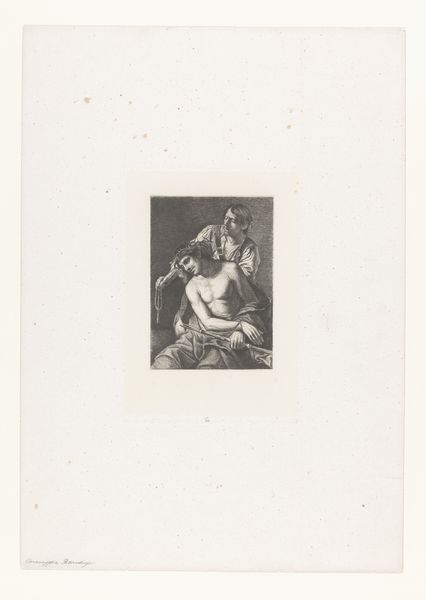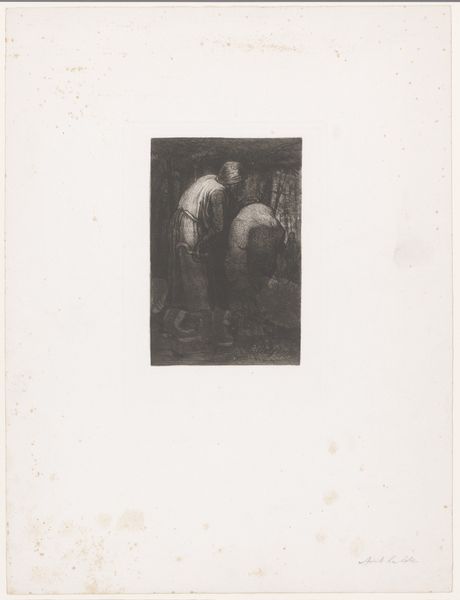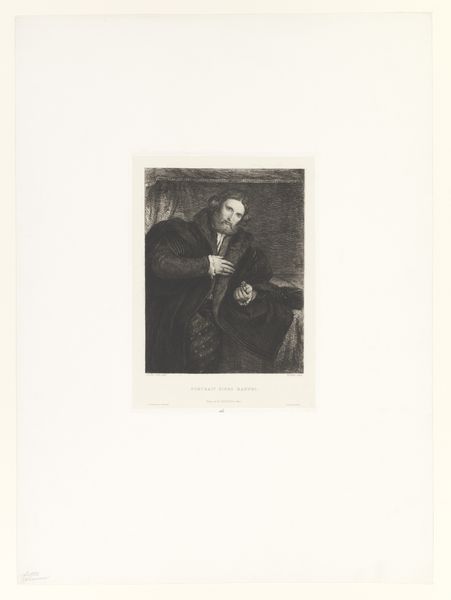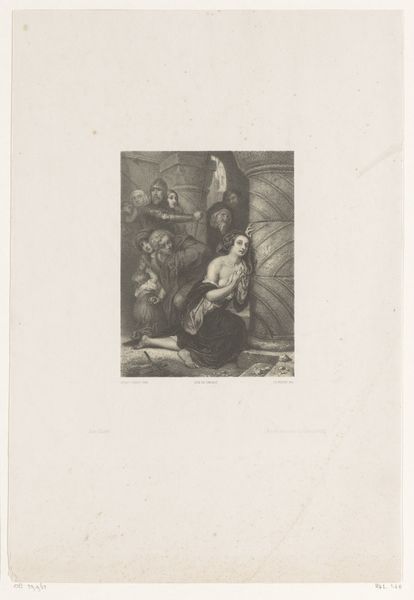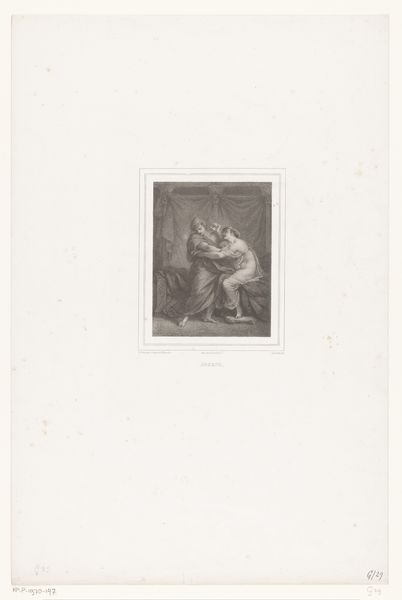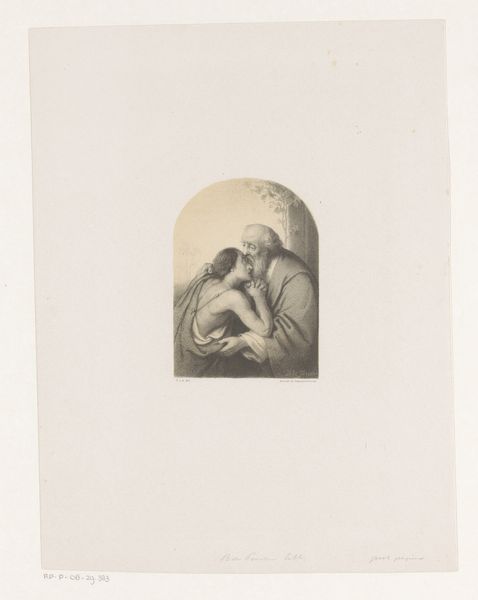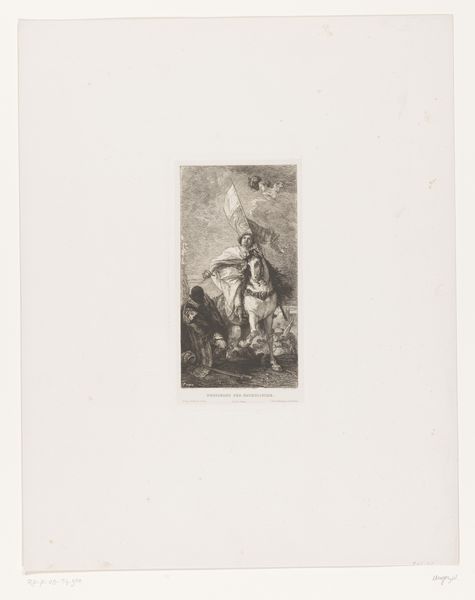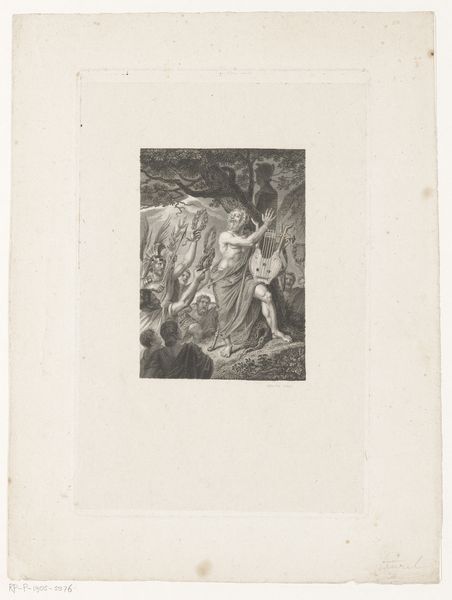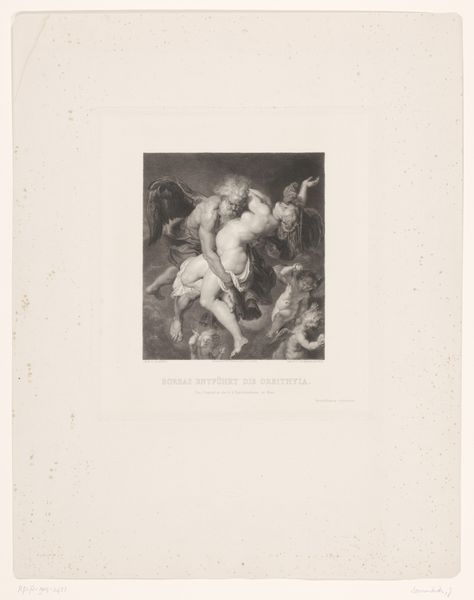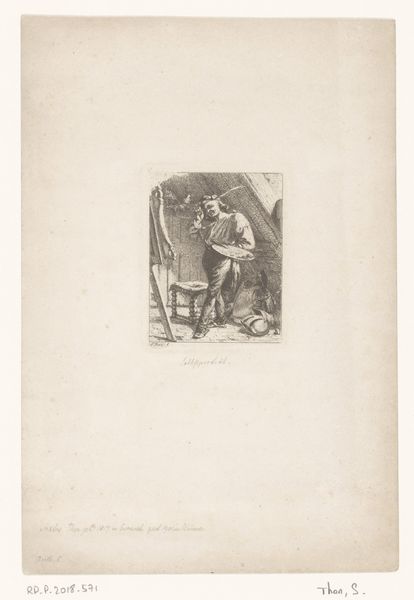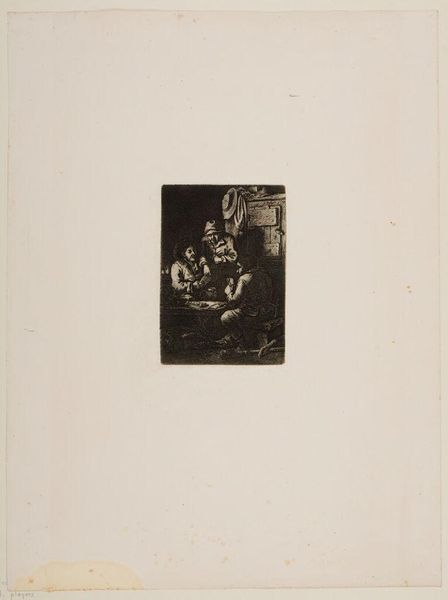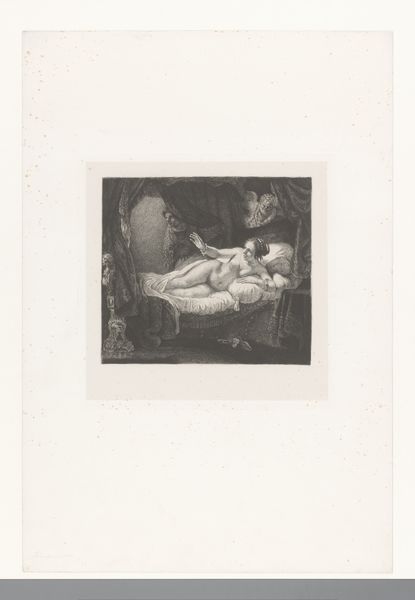
Dimensions: height 134 mm, width 101 mm
Copyright: Rijks Museum: Open Domain
Curator: Pierre Andrieu’s “Jozef en de vrouw van Potifar,” executed sometime between 1813 and 1892, presents a dramatic biblical scene rendered in ink on paper. It certainly grabs the eye with its shadowy Romanticism! What do you make of it at first glance? Editor: It strikes me immediately as a study in contrasts. The figures are locked in what appears to be a struggle, but the composition itself feels quite balanced, almost theatrical in its arrangement. The use of line and shadow definitely amplifies the emotional intensity of the piece. Curator: Absolutely. We see the tale of Joseph and Potiphar’s wife played out with archetypal energy. The visual cues of virtue in resistance, framed within the context of historical genre-painting, invite reflection on enduring morality and social expectations. Editor: Tell me more about these visual cues of virtue you're referring to? What do they tell us about its reception within a historical and stylistic framework? Curator: Note the almost exaggerated tension in Joseph’s stance—how he pulls away, seemingly recoiling from her advances, versus the very determined posture of Potiphar's wife. Even her partially exposed state reads as a symbolic challenge to conventional modesty. All the traditional markers of the seductress are on full display. The play is an old one, retold using updated Romantic, academic staging, referencing the ancient drama of power, seduction and betrayal, thus echoing across history. Editor: It's interesting you mention the traditional reading of virtue and seduction here, particularly as the stylistic treatment—the intense contrasts of dark ink against the stark paper—renders a sense of claustrophobia. Curator: Precisely! The tight cropping, focusing primarily on the figures and minimal background elements, pushes the psychological drama to the forefront. The setting fades, but the narrative becomes paramount. Editor: Ultimately, whether one approaches it as an art historical piece, or reads for a tale of social mores, what becomes strikingly apparent is how Andrieu's strategic formalism elevates this particular work to one where an age-old conflict comes vividly to life. Curator: Indeed, whether from a Formalist point of view, or with a reading sensitive to iconographic symbolism, there are few avenues of analysis that lead away from acknowledging its depth.
Comments
No comments
Be the first to comment and join the conversation on the ultimate creative platform.
